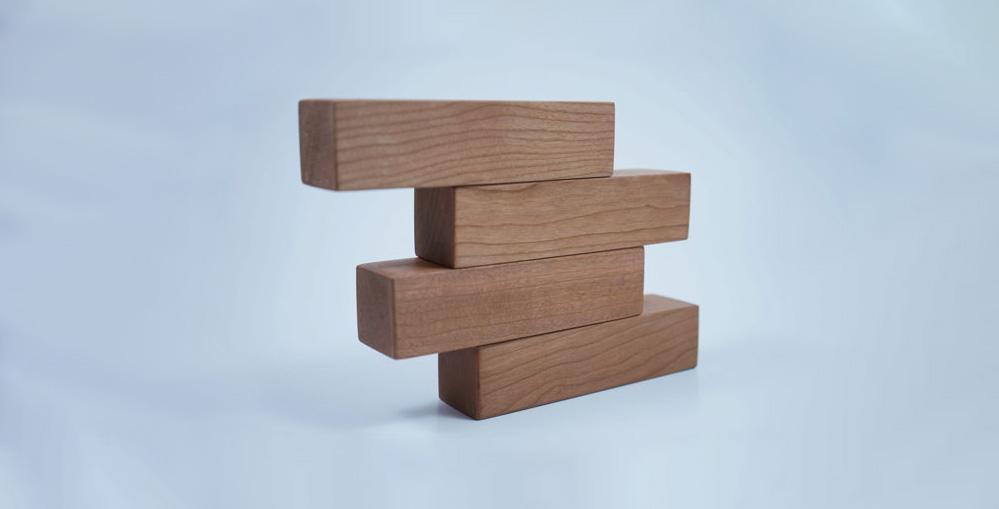Activity Overview
Students are challenged to compete in teams of 4 to produce a design with the largest overhang. They will have the opportunity to:
- Feel the forces involved in their designs
- Be creative while working toward a defined objective
- Understand how system components work together
- Feel balance points
- Describe the features that are critical to the success of their designs
- Begin learning about teamwork and the value of contracts
And, if the contract is used, also

Learning Objectives
By the end of the activity, students should:
- Have experienced mechanical forces with their own hands
- Have been rewarded for purpose-driven creativity
- Be able to tell by feel whether a structure or its parts are stable or on the verge of tipping (failing)
- Be able to describe, in relative terms, the directions (downward, sideways, at an angle) and relative magnitudes (larger or smaller) of forces generated by various combinations and geometries of blocks
- Have a sense of whether a given gravitiationally-loaded structure will stand
- Be able to suggest designs to achieve stated aims for simple structures made of stacked elements
- Start to understand the purpose of a contract and its value in a collective enterprise
Tips for Using the Activity
Students should be encouraged to explore and be creative.
They should be urged to feel the “tipping-over points” as blocks in any particular design are adjusted.
They should be asked to figure out the features that are important to the optimization of their designs.
Achieving a larger overhang than other groups should not be seen as a primary goal, but rather groups should be encouraged to strive to find their best design(s).
Course credit or other recognition might also be given for other design attributes, such as beauty, strength or ease of construction.
Equipment Design
Blocks should be sufficiently large and heavy that students can feel the forces they generate. The wood should be reasonably homogeneous so the centroid of each block is close to its geometric center. All edges and corners should be rounded slightly (3mm radius) to increase durability. All surfaces should be flat and smooth and coated with a waterproof finish. Our blocks were square in cross-section and 4 times as long as they were wide.
See Downloadables